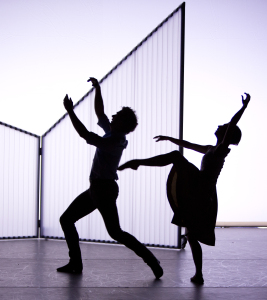Twenty years ago the ‘National Attitudes to Mental Illness Report’ was established. This annual survey, funded by the Department of Health, was devised to monitor changes in public opinion, recognised at the time to be primarily driven by misunderstanding and stigma.
On World Mental Health Day 2014, the latest in a series of encouraging figures from the survey were revealed. They showed that since 2011 an estimated 2 million people – 4.8% of the population – have demonstrated improved attitudes to mental illness. Much of this change is attributable to investment in anti-stigma campaigns, most notably “Time to Change”, a joint initiative of the charities Mind and Rethink. Additionally, or perhaps as a consequence, media portrayals of mental illness have shifted.
Not only are negative or alarmist news reports less frequently produced, there has been a cultural transformation in the depiction of mental illness in the cinema and on television. Producers are aware of a greater level of accountability in their work; their images of mental illness are better researched and tend to invite empathy and reflection rather than the scaremongering and ridicule of the past.
Now, it appears that this fruitful change has reached the theatre, as evidenced by the Royal Ballet’s performance of Cassandra, in Covent Garden. The show’s three co-creators, a choreographer, a singer-songwriter and a filmmaker all describe “deeply personal connections” to the themes of the production and it is surely this motivation which has inspired such a powerful piece, designed to challenge public assumptions of what it means to be ‘mad’.
A haunting and ethereal theatrical experience depicts with beautiful sensitivity the onset of a de novo psychotic illness in a young woman. A happy life, successful career and close family relations disintegrate before our eyes. Few words are needed; perceptual disturbances are described through disorientating and intrusive visual projections, then second and third person auditory hallucinations emerge, delivered via a discordant voiceover.
The medium of dance lends itself perfectly to the onset of psychomotor symptoms as the protagonist’s graceful movements become increasingly unpredictable and chaotic. Her mental state fluctuations are analogous to the erratic stockmarket variations of her high pressured trading job.
This is a thoughtful production, without hyperbole or gimmick. The degree of impact on family members, not often a feature of cultural depictions of mental illness, is profoundly delivered. Cassandra’s mother and brother oscillate between experiencing happy memories of her earlier times and acute distress at her clinical deterioration. Projections of an idyllic childhood interchange with fleeting abstract visions, including images of synaptic junctions and Rorschach plates. Such complexity of emotion is rarely achieved through dance. The depiction of carer burden is all the more poignant when one learns of the music producers’ brother, diagnosed with schizophrenia in his teenage years: the programme notes document her cathartic need “to keep his voice alive” by translating her own experiences to stage.
There is a critique of the process of medicalization, but this does not stray into the realms of anti-psychiatry. Cassandra is admitted to a stark hospital environment, where she remains under a spotlight, observed and exposed, at one point more than metaphorically. This sat uncomfortably for the professional viewer, but with good reason, speaking powerfully towards all patients’ potentially isolative and bewildering experience of an admission.
(Gary Avis and Mara Galeazzi ©ROH, 2014)
Psychiatric professionals come and go metronomically, somewhat anonymously, the noise of a ticking clock accompanying their routine, but are ultimately seen to provide compassion and comfort in Cassandra’s greatest time of need. Importantly, the production’s balanced conclusion contains evidence of an improvement in Cassandra’s mental state but also a realistic sense that her life will never quite return to normality.
To their great credit, the producers have enlisted the advice of Dr Mark Salter, a consultant adult psychiatrist. His influence proves vital to the authenticity of the psychosis. After the production we met with Mark, who rightly appeared proud of the work. His main disappointment was that the psychiatrists had been dressed in white coats, an element he had wanted removed.
In Greek mythology Cassandra, daughter of the King of Troy, is blessed with the power of prophecy but cursed never to be believed. She predicts the fall of Troy but is dismissed as being insane. In some versions of the story, this very process drives her to madness. One of the many modern day descriptions of the ‘Cassandra Syndrome’ characterise an individual able to see or understand things long before others are able to reach the same conclusion. It can only be hoped that visionary productions such as this will provoke further attitudinal change so that one day we will wonder how we ever got it so wrong.
Dr Rory Conn is an ST5 in Child and Adolescent Psychiatry at The Tavistock and Portman NHS Foundation Trust
Dr Chloe Bulwer is an Academic Paediatric Trainee at the Institute of Child Health
Correspondence to: rconn@doctors.org.uk
Twitter: @roryconn
